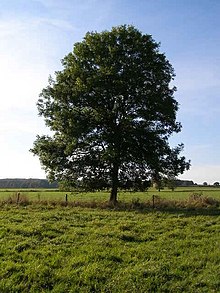**Tree Definition and Overview:**
– A tree is a plant with an elongated stem supporting branches or leaves.
– Trees can be defined by their height, with smaller ones called shrubs.
– They typically have a woody trunk formed by secondary growth.
– Trees compete for sunlight and are tall, long-lived organisms.
– There are an estimated 60,000-100,000 tree species worldwide, mainly angiosperms or hardwoods.
**Tree Reproduction and Environmental Impact:**
– Trees usually reproduce using seeds, with various methods among different types.
– Some trees have flowers and fruit, while others have pollen and seed cones.
– Trees play a vital role in reducing erosion, moderating climate, storing carbon, and providing habitat for various species.
– Deforestation for agriculture is a global concern impacting biodiversity and climate change.
**Tree Structure and Distribution:**
– Trees have roots for anchoring, stems for support and transport, and leaves for photosynthesis.
– The world has 3.04 trillion trees, with varying distributions across regions and forest types.
– Different parts of trees, such as roots, stems, and leaves, serve specific functions crucial for their survival and growth.
**Tree Parts and Ecological Importance:**
– Roots anchor trees, absorb water and nutrients, and form symbiotic relationships with fungi and bacteria.
– Stems and trunks provide structural support, transport water and nutrients, and undergo secondary growth for wood production.
– Leaves are essential for photosynthesis, gas exchange, and defense mechanisms, contributing to oxygen production and carbon sequestration.
– Trees play a crucial ecological role in providing habitats, preventing soil erosion, regulating climate, and supporting biodiversity.
**Tree Reproduction Methods and Uses:**
– Trees reproduce through seeds or spores, with diverse pollination and seed dispersal mechanisms.
– Tree seeds vary in size and shape, reflecting different dispersal strategies.
– Trees have been historically significant for providing fruits and nuts, which are consumed globally and play a vital role in various industries.
– Different types of fruits, including temperate, tropical, and forest fruits, offer diverse nutritional benefits and support local economies.
In botany, a tree is a perennial plant with an elongated stem, or trunk, usually supporting branches and leaves. In some usages, the definition of a tree may be narrower, including only woody plants with secondary growth, plants that are usable as lumber or plants above a specified height. In wider definitions, the taller palms, tree ferns, bananas, and bamboos are also trees.


Trees are not a monophyletic taxonomic group but consist of a wide variety of plant species that have independently evolved a trunk and branches as a way to tower above other plants to compete for sunlight. The majority of tree species are angiosperms or hardwoods; of the rest, many are gymnosperms or softwoods. Trees tend to be long-lived, some reaching several thousand years old. Trees have been in existence for 370 million years. It is estimated that there are around three trillion mature trees in the world.
A tree typically has many secondary branches supported clear of the ground by the trunk, which typically contains woody tissue for strength, and vascular tissue to carry materials from one part of the tree to another. For most trees it is surrounded by a layer of bark which serves as a protective barrier. Below the ground, the roots branch and spread out widely; they serve to anchor the tree and extract moisture and nutrients from the soil. Above ground, the branches divide into smaller branches and shoots. The shoots typically bear leaves, which capture light energy and convert it into sugars by photosynthesis, providing the food for the tree's growth and development.
Trees usually reproduce using seeds. Flowers and fruit may be present, but some trees, such as conifers, instead have pollen cones and seed cones. Palms, bananas, and bamboos also produce seeds, but tree ferns produce spores instead.
Trees play a significant role in reducing erosion and moderating the climate. They remove carbon dioxide from the atmosphere and store large quantities of carbon in their tissues. Trees and forests provide a habitat for many species of animals and plants. Tropical rainforests are among the most biodiverse habitats in the world. Trees provide shade and shelter, timber for construction, fuel for cooking and heating, and fruit for food as well as having many other uses. In much of the world, forests are shrinking as trees are cleared to increase the amount of land available for agriculture. Because of their longevity and usefulness, trees have always been revered, with sacred groves in various cultures, and they play a role in many of the world's mythologies.
